Interested in living a more environmentally friendly lifestyle, but not sure where to start? That was me, not too long ago. We hear phrases thrown around – global warming, carbon footprint, green living, sustainable lifestyle, zero waste – and can often feel overwhelmed by it all. What difference would the lifestyle changes of one person make anyways? Honestly, I don’t know, but I’m not going to let that stop me. If I do my part and you do yours, I think we really can make a difference.
Not all minimalists are environmentalists, but for me it was a natural extension. I’m not writing this post to convince you that you need to make changes, but if you’re already at that point and need help getting started, here are some of the ways our family has been able to reduce our waste and live more sustainably. These are all super easy, we’re not starting with “make all your own cleaners and personal products” (but maybe someday!), so pick something(s) that resonate with you and start today!
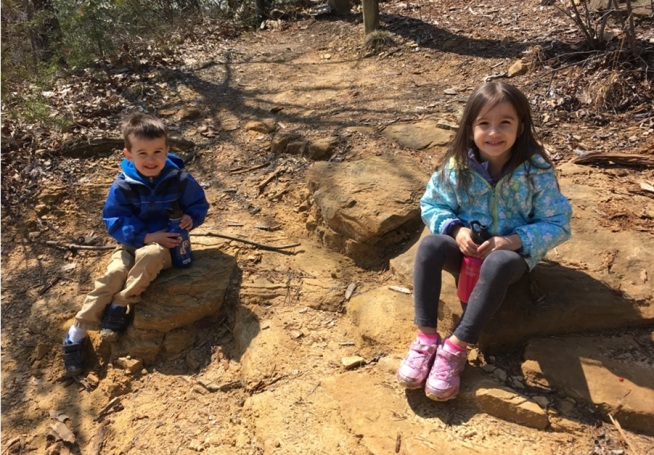
1. Bring a Reusable Water Bottle
This is an easy change that makes a big difference for both the environment and your piggy bank. Find a water bottle you love and bring it along wherever you go! Anywhere you would use a disposable bottle or cup, bring your reusable water bottle instead: hiking, the beach, amusement park, sports event, fast food restaurant, in the car, camping, school, lunch, work, vacations, etc. If you’re using plastic water bottles at home, consider investing in a water filter instead. Plastic water bottles are recyclable, but the environmental impact of making them is significant and many of them don’t end up in recycling bins. We like using stainless steel water bottles and have loved the collection by Klean Kanteen. Our kids love their Klean Kanteens with the sport cap and we even had the sippy lids and toddler size water bottles when the kids were younger.
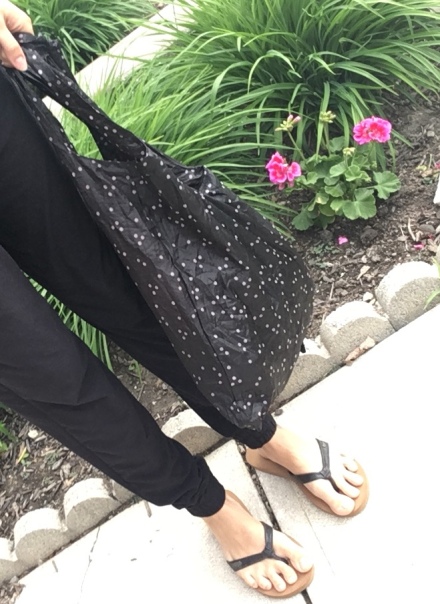
2. Use Reusable Shopping Bags
Buy some reusable shopping bags and keep them somewhere accessible. We keep our bags in our van so we have them with us whenever we’re out shopping. Other places to keep a reusable bag include a purse, backpack, glove box, front closet, etc.
(Here’s the math teacher coming out in me… ) Plastic bags here cost $0.05 each and reusable bags are around $2.00 each. If you were to purchase 5 reusable bags and use them once a week for grocery shopping, you will break even financially in less than 10 months and have avoided using 200 plastic bags over that period of time!
Our family uses closer to 8 bags for our weekly grocery shop, and they’re still going strong after 7 years of use. This means our initial investment of $16 for our reusable bags has saved us from using over 2900 plastic bags so far!
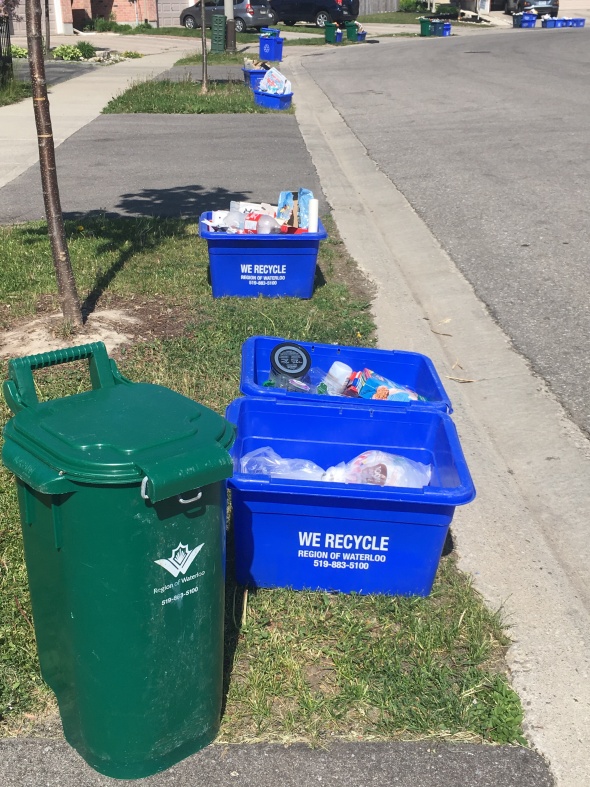
3. Compost & Recycle
If you haven’t started doing this yet, get on it! Find out what waste management programs are available to you locally and start sorting your trash. I’m so thankful I live in a community that collects our recycling and compost. I even have an app on my phone that tells me which bin everything belongs in! I think we should find ways to reuse and reduce our waste first, but some will remain. Take the time to put what you can into the recycling or compost. We have three compost containers throughout our home, making it easier to put everything where it belongs.
4. Get Your Bills Online
Sign up to receive all of your bills online. This saves paper from being used unnecessarily and reduces the mail clutter that comes into your home. Most companies let you access at least 5 years worth of bills online, so you can still view them any time you need. If you need a copy for business purposes, you can save them and file them on your computer.
While you’re at it, set up all of your bills for automatic payments so you never miss a due date!You can also opt to have movie tickets, show tickets, receipts, contracts, etc. sent to your phone or email instead of using a printed copy.
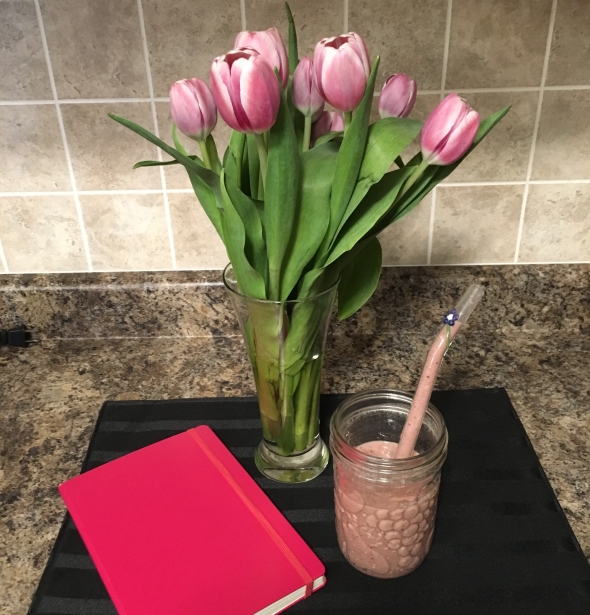
5. Use Reusable Straws
I was rather skeptical about this one at first. I was concerned that I wouldn’t be able to clean reusable straws well enough, but with 3 of us using plastic straws every morning for our smoothies, I needed to at least give it a try! I have been pleasantly surprised by how easy the switch away from plastic straws has been. I started with 4 stainless steel straws and soon after purchased 4 more. I like to rinse them right after I use them and then wash them in the dishwasher. I recently purchased glass straws for myself and my kids; they’re fantastic! I love the fact that I can see right through them. This has been a very easy switch for our family and we’re now saving over 1000 plastic straws from going to the landfill each year!
6. Pack Your Lunch with Reusable Containers
Pack your own lunch? Try to swap out disposable wrappings for reusable ones! There are so many options right now – reusable cloth snack bags, beeswax food covers, reusable containers (like a Bento Box). If the food in your lunch is homemade or bought from a bulk store, you can even avoid the waste from snack packages like granola bars. My daughter’s school sends home any garbage that the kids have from their lunch – I love this! We should all be aware of the amount of waste that comes from convenience foods.
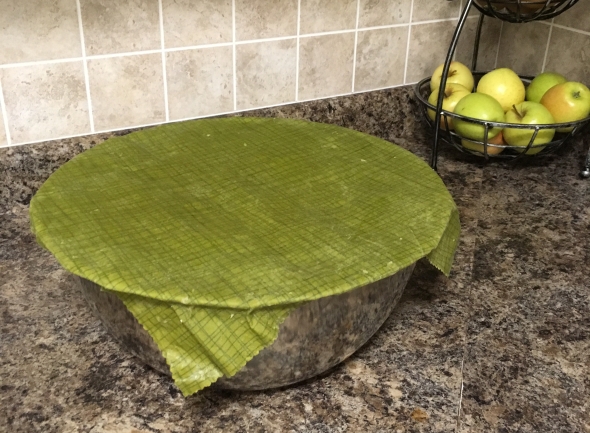
Beeswax wraps are also a great substitute for Saran Wrap or plastic bags when you need to cover food such as leftovers.
7. Use the library
Here’s another one that saves the environment and your money. We use the library all the time for books, children’s books, read-along books and even DVDs. I love books, but I don’t usually want to keep them when I’m done reading them. I have gone out and purchased my own copy of a book after starting the library copy, but of the hundreds of books I’ve borrowed, this has only happened twice. Many people read ebooks now, and that’s a great way to reduce the need for paper books, but personally I just love a book I can hold in my hands – borrowing from the library reduces the paper that is needed for me to read!
Many communities now have ‘things’ libraries as well, where you can borrow things that you need only occasionally, such as specialty tools. Using a things library prevents unnecessary consumerism and saves you money!
8. Change Your Clothes Shopping Habits
The easiest way to do this is to simply buy less clothing. After going all of last year without buying any clothes, we’re making more intentional decisions about our wardrobe, reducing the amount of clothing we purchase and trying to buy from environmentally responsible clothing companies. I found that minimizing my wardrobe helped me see what I had and only buy the pieces I need.
Shopping second hand for clothing also reduces your environmental impact. We’ve been able to get almost all of our children’s clothes from our local used clothing shop, Once Upon A Child.
These principles for mindful shopping don’t just apply to clothing, we can be more conscious consumers with all of our purchases.
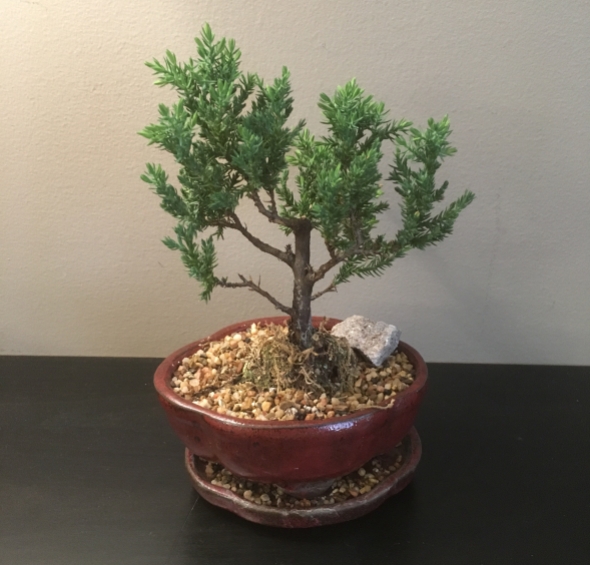
9. Water Your Plants with Water Bottle Leftovers
I’ve just started doing this and it’s genius! When I empty old warm water from a water bottle, I use it to water my plants. This keeps my plants watered without wasting any fresh water!
10. Use Cloths Instead of Napkins
Paper towels are so darn easy to grab, but we have some baby wash clothes that we use when the kids need wiping down after meals.
![IMG_1867[25101] (3)n](https://seekingsimplicityca.files.wordpress.com/2018/06/img_186725101-3n.jpg?resize=590%2C465)
11. Shop Locally

12. Use a Pour Over Coffee System
Back in the day we had a Keurig… it broke right around the time we started to evaluate our environmental impact. We didn’t buy a new one. Instead of buying a coffee maker, we use a pour over system with a built in filter.
13. Use a Menstrual Cup
This one is for the ladies, but guys, you could suggest it to a woman in your life… if that’s the kind of relationship you have… I was pretty skeptical about this at first, but after hearing about it from a few different friends, I decided to give it a try. I’d have to say the learning curve was a little steep for me, but now that I’ve figured it out – Game. Changer. Seriously, check it out.
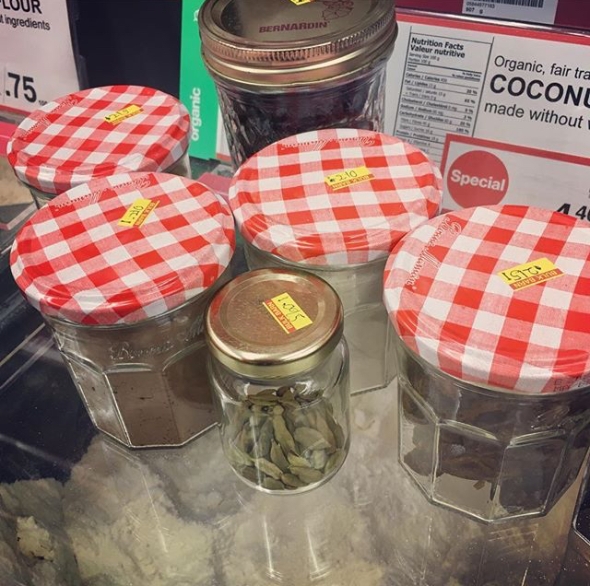
14. Bring Your Own Containers to Bulk Stores
I’ve just started doing this recently. It felt like a big deal the first time I walked in with my containers and mason jars, but it was so easy. Check your local bulk stores for one that allows you to bring your own containers and save the packaging! I love The Bulk Barn and can get pretty much any of my pantry staples here. If you don’t have a bulk store that offers this options, ask them about it, maybe you can start something!
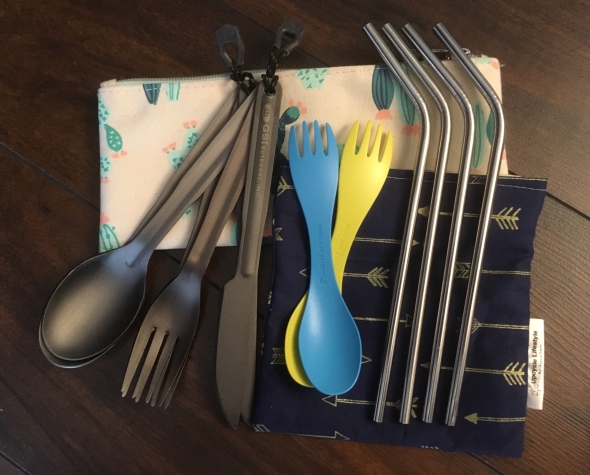
15. Get a Zero Waste Travel Kit
I just recently put together a kit that we can take with us when we’re out, to reduce the amount of one-use items we use on the go. We keep this in our glove box and bring it with us when needed. Our kit includes 4 stainless steel straws, 2 cutlery sets (for the adults), 2 sporks (for the kids) and a cloth snack bag. We don’t often eat out, but when we do, we can now reduce the amount of waste we use. We’ve had this kit in our van for less than 3 weeks and have already used it at least 5 times. Family BBQ, church potluck, drinks at Starbucks, bringing home a cookie from Nana’s – the possibilities are endless!
I am not an expert on zero waste or clean living and there are still a lot of changes I could make, but I’m happy with the progress we’ve made and excited to keep learning more.
How about you? What are some ways you’ve been able to reduce waste in your life? What’s something you could start doing today to live more sustainably?




Thanks. You have a couple of great ideas I had not yet come across.